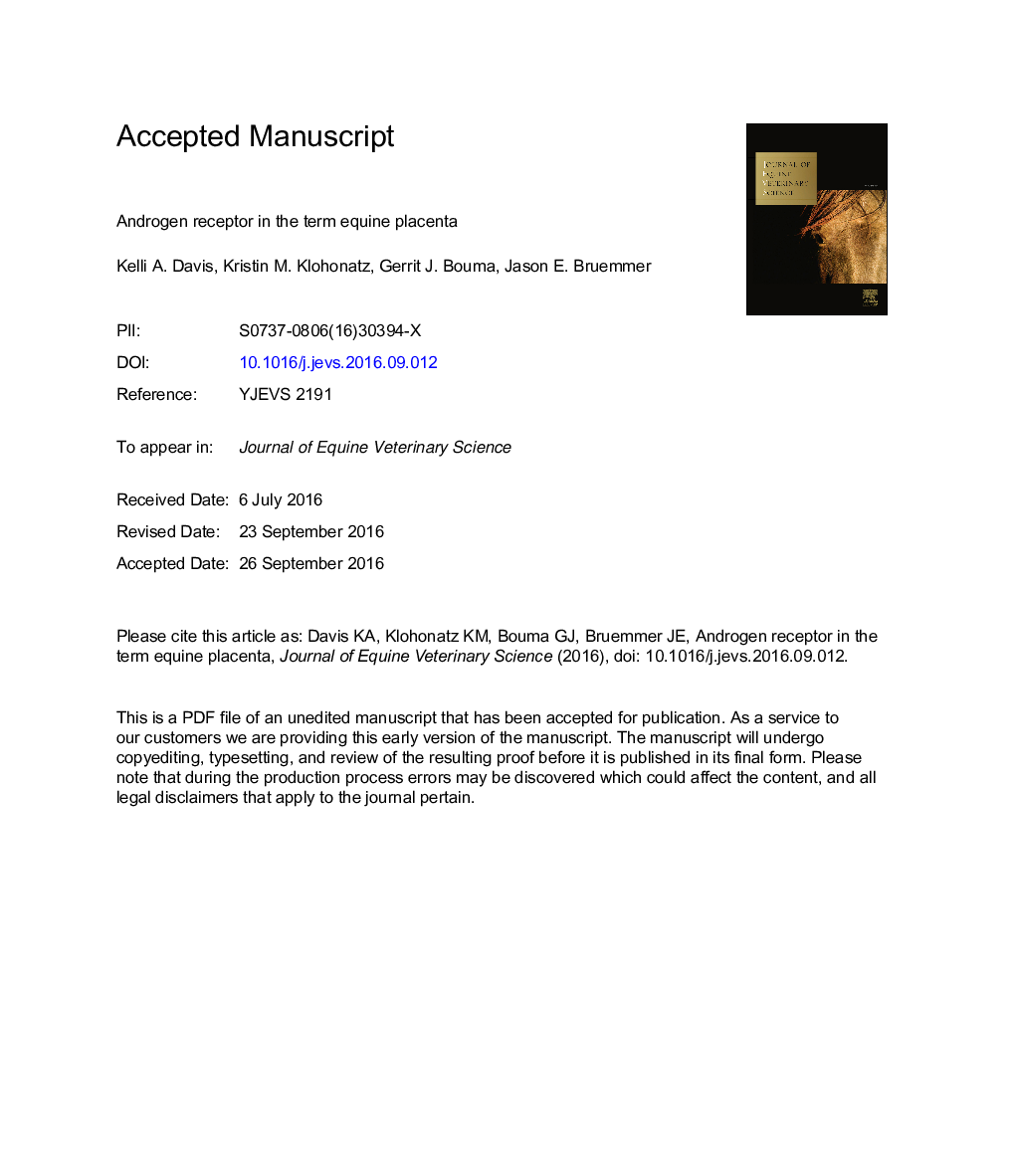| Article ID | Journal | Published Year | Pages | File Type |
|---|---|---|---|---|
| 5535613 | Journal of Equine Veterinary Science | 2017 | 14 Pages |
Abstract
The equine placenta is critical in maintaining pregnancy. Not only does it provide essential nutrients and gasses, but it also functions as an endocrine, paracrine, and autocrine organ. For example, it is one of the main sources of estrogen and progesterone in the latter stages of pregnancy. In addition to supplying hormones required for development and pregnancy maintenance, hormones supplied by both the mare and fetus act on the placenta to influence its development and function. The equine placenta possesses both estrogen and progesterone receptors, and a great deal is known about these hormones' effects on placental development. However, very little is known about how, or if, androgens interact with the placenta to affect placental development and/or maintenance. Androgen receptor (AR) has been identified in the placenta of humans, cows, sheep, and rats; however, little is known about its exact functions related to the placenta. The focus of this study was to confirm the presence of AR in the equine placenta. Three term equine placentas from normal pregnancies were utilized in this study. Reverse transcription polymerase chain reaction was used to identify mRNA encoding AR, and Western blotting confirmed the presence of AR protein within the equine placenta. The results of this study provide new insight into the presence of AR, similar to other species including the human, bovine, ovine, and murine placenta.
Keywords
Related Topics
Life Sciences
Agricultural and Biological Sciences
Animal Science and Zoology
Authors
Kelli A. Davis, Kristin M. Klohonatz, Gerrit J. Bouma, Jason E. Bruemmer,
